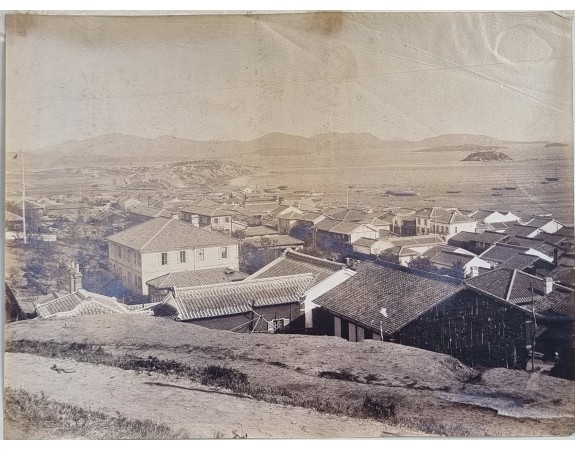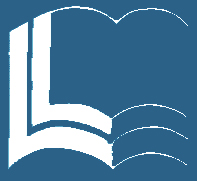ANONYME / FRANDIN, J. H. (attribué à). - Album de photographies : Vues de Corée, de Thaïlande, du Cambodge et de ses habitants et princes.

ANONYME / FRANDIN, J. H. (attribué à). - Album de photographies : Vues de Corée, de Thaïlande, du Cambodge et de ses habitants et princes.
Published: C. 1892
Size: 270 x 350mm.
Color: Uncolored
Condition: Oblong 4to album, boards ( disbound ) covered with Chinese floral cloth (faded), comprising 104 photographs of varying dimensions, albumen prints, mounted on cardboard (some detached and/or damaged), presented in plastic sleeves. Album damaged, soiled, rubbed, faded, 2 covers separated. Photographs a little faded, some cardboards damp staining. [caption reads: “Voyage de Bangkok à Pnompenh/Mars 1892”].
Description
Very interesting photo album including a photograph of “the King of Korea and his son” reproduced in Charles Varat Voyage en Corée (1892) and a photograph (or more) by Hippolyte Frandin, who was appointed on 12 July 1890 as Consul and Commissioner of the French Government, replacing Victor Collin de Plancy in this position. He was replaced on 23 December 1895 by Victor Collin de Plancy. Hippolyte Frandin is famous for his photography of traditional Korea. After returning to France, based on his experience and what he saw back in Korea, he published a book called "En Corée".
Joseph, Hippolyte Frandin arrived in China in 1875 as a student-interpreter. He was interpreter for the French Consulate in Tianjin in 1880, interim consul in 1883-1884, first-class counsellor of the french legation in 1889. The Biblitohèque nationale de France (BnF) has an author page on him. They confirm his birth in 1852, but put his death in 1926. Apparently his career led him to China (1886-1890), Korea (1890-1896), Columbia (1896-1897) and Ecuador (1897-1902). They also have an album of pictures of an expedition he led, which was tasked with determining the border between the French colony of Tonkin and China.
Charles Varat went to Joseon Korea from 1888 to 1889 as an explorer in charge of ethnographic studies mandated by the French Ministry of Education. He later published a report in three parts with a review of the literature on Korea, an account of his travels and a final part on the "ethnic personality" of the Korean people. Before the publication of this volume, the accounts of his travels were published by the French editor Hachette in 1892 in an illustrated periodical called "Le Tour du Monde" which compiled contemporary accounts of travels across the world.
"A priceless collection of photographs taken by a French diplomat more than a century ago was presented in an exhibition inaugurated at the end of 2002 in Korea. The photographs taken at the time offer a fascinating insight into the final years of the Chosŏn period, towards the end of the 19th century.
The exhibition entitled "Corée lointaine: à la mémoire d'Hippolyte Frandin", which opened on 24 December 2002 at the Kyŏnggi National Museum in Yongin, brings together around 150 black and white photographs, sometimes a little faded, taken by the French diplomat.
The works on display are divided into five groups: Frandin's diplomatic activities, entertainment and leisure, the way of life of the people of Chosŏn, the beauty of the Korean landscape and life at the Chosŏn court.
Second Consul General of the French Consulate from 1892 to 1894, Frandin (1852-1924) managed to collect several snapshots of Chosŏn society under the influence of Western civilisation after Korea opened up to the outside world.
France was one of the first Western countries to maintain regular contact with Korea from the end of the 18th century, thanks to the work of Catholic missionaries. However, the path by which the two countries had to establish formal diplomatic relations was never easy: formal relations were not established until 1886, much later than most other European nations.
In February 2003, in parallel with the exhibition, the host museum organised a series of lectures on Frandin's career in Korea and the nature of his photographic collection, as well as on France's imperial outlook on Korea at the time."
Photos attributed to Hippolyte Frandin
- Revue à Séoul Juin 1892
General Han, the Korean official, and Viscount de Labrie, the French official. In what is believed to be a customs office near Seosomun, officials from the French mission, including Frandin (front row, right, in hat), met with Korean General Han (front row, centre, in new clothes), French Minister of State Viscount de Labrie (front row, left, in white), and French Minister of State.
- (Six young girls)
- King Gojong, left, and the Crown Prince
Though the royal family "didn't live a happy life," it is interesting enough to see how they reacted to the new culture from the West, introduced by Japan. There were no designated royal photographers, but Westerners such as Percival Lowell as well as Korean and Japanese photographers took pictures of the royal family.
King Gojong (1852-1919) actually liked to be photographed. Most of his pictures are in royal robes, but he just looks like a commoner in some photos. He even made postcards of his photo and distributed the image to guests of the state as a diplomatic gesture.
Joseph, Hippolyte Frandin arrived in China in 1875 as a student-interpreter. He was interpreter for the French Consulate in Tianjin in 1880, interim consul in 1883-1884, first-class counsellor of the french legation in 1889. The Biblitohèque nationale de France (BnF) has an author page on him. They confirm his birth in 1852, but put his death in 1926. Apparently his career led him to China (1886-1890), Korea (1890-1896), Columbia (1896-1897) and Ecuador (1897-1902). They also have an album of pictures of an expedition he led, which was tasked with determining the border between the French colony of Tonkin and China.
Charles Varat went to Joseon Korea from 1888 to 1889 as an explorer in charge of ethnographic studies mandated by the French Ministry of Education. He later published a report in three parts with a review of the literature on Korea, an account of his travels and a final part on the "ethnic personality" of the Korean people. Before the publication of this volume, the accounts of his travels were published by the French editor Hachette in 1892 in an illustrated periodical called "Le Tour du Monde" which compiled contemporary accounts of travels across the world.
"A priceless collection of photographs taken by a French diplomat more than a century ago was presented in an exhibition inaugurated at the end of 2002 in Korea. The photographs taken at the time offer a fascinating insight into the final years of the Chosŏn period, towards the end of the 19th century.
The exhibition entitled "Corée lointaine: à la mémoire d'Hippolyte Frandin", which opened on 24 December 2002 at the Kyŏnggi National Museum in Yongin, brings together around 150 black and white photographs, sometimes a little faded, taken by the French diplomat.
The works on display are divided into five groups: Frandin's diplomatic activities, entertainment and leisure, the way of life of the people of Chosŏn, the beauty of the Korean landscape and life at the Chosŏn court.
Second Consul General of the French Consulate from 1892 to 1894, Frandin (1852-1924) managed to collect several snapshots of Chosŏn society under the influence of Western civilisation after Korea opened up to the outside world.
France was one of the first Western countries to maintain regular contact with Korea from the end of the 18th century, thanks to the work of Catholic missionaries. However, the path by which the two countries had to establish formal diplomatic relations was never easy: formal relations were not established until 1886, much later than most other European nations.
In February 2003, in parallel with the exhibition, the host museum organised a series of lectures on Frandin's career in Korea and the nature of his photographic collection, as well as on France's imperial outlook on Korea at the time."
Photos attributed to Hippolyte Frandin
- Revue à Séoul Juin 1892
General Han, the Korean official, and Viscount de Labrie, the French official. In what is believed to be a customs office near Seosomun, officials from the French mission, including Frandin (front row, right, in hat), met with Korean General Han (front row, centre, in new clothes), French Minister of State Viscount de Labrie (front row, left, in white), and French Minister of State.
- (Six young girls)
- King Gojong, left, and the Crown Prince
Though the royal family "didn't live a happy life," it is interesting enough to see how they reacted to the new culture from the West, introduced by Japan. There were no designated royal photographers, but Westerners such as Percival Lowell as well as Korean and Japanese photographers took pictures of the royal family.
King Gojong (1852-1919) actually liked to be photographed. Most of his pictures are in royal robes, but he just looks like a commoner in some photos. He even made postcards of his photo and distributed the image to guests of the state as a diplomatic gesture.
13,500€
- Reference N°: 65480
954 views
 Click on image to zoom
Click on image to zoom
